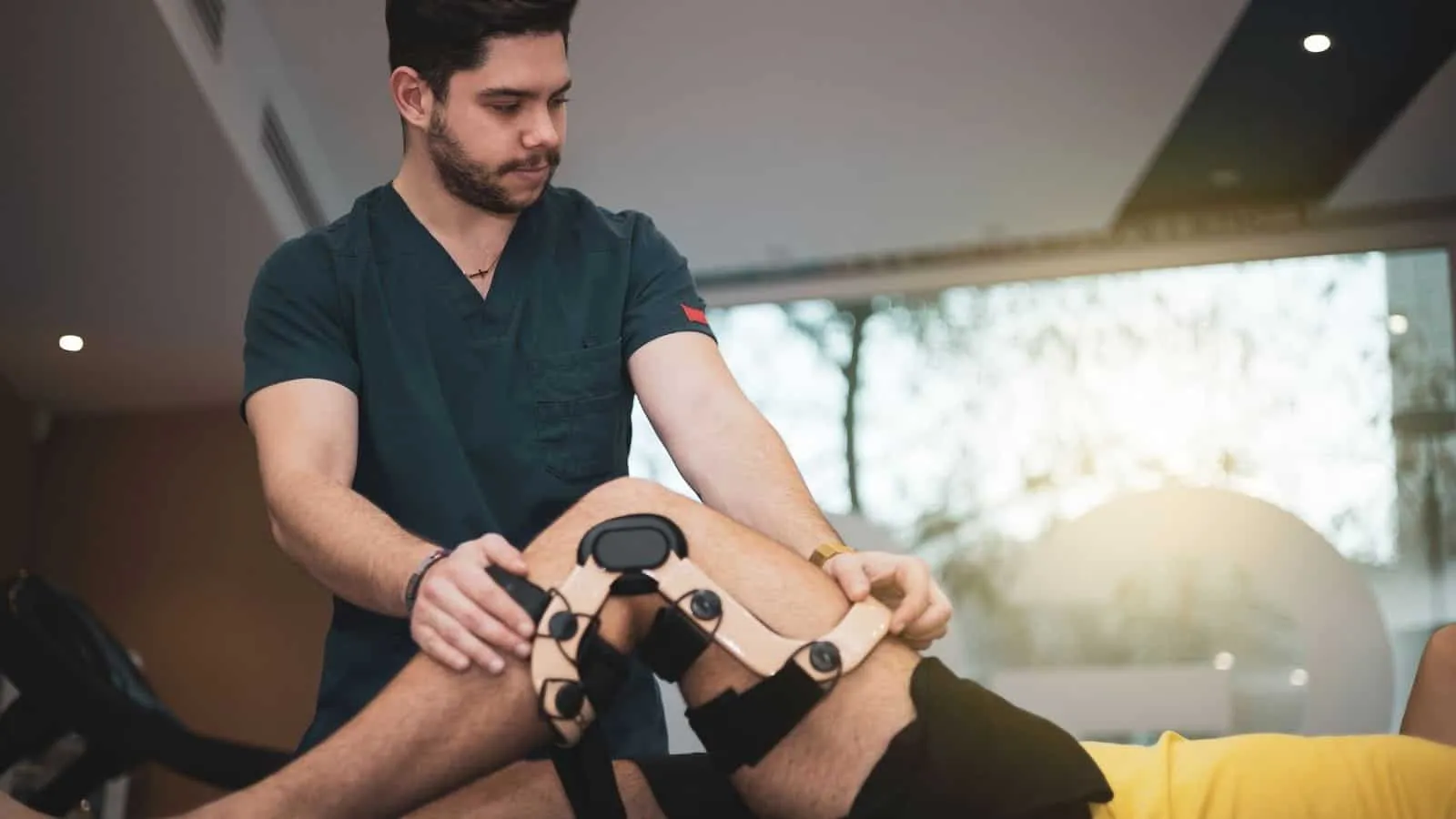Understanding Knee Replacement and Why It’s Needed
Knee replacement surgery is one of the most common orthopedic procedures, especially for individuals struggling with severe arthritis, chronic knee pain, or injuries that limit mobility. Over time, the cartilage in the knee can wear down, making walking, climbing stairs, or even standing for long periods extremely difficult. When conservative treatments such as medications, physical therapy, or injections no longer provide relief, knee replacement becomes a recommended option. The procedure involves replacing the damaged joint surfaces with artificial implants designed to restore movement and reduce pain. Patients who undergo this surgery often experience significant improvements in their ability to perform daily activities. Many also report higher overall quality of life due to reduced pain levels and increased independence. Affordable knee replacement has become an essential focus for patients who want these benefits without overwhelming medical bills.
The Rising Costs of Knee Replacement in the U.S.
The cost of knee replacement surgery has steadily increased in the United States, making affordability a pressing concern for many patients. On average, the total expense can range between $35,000 and $60,000 when factoring in hospital stays, surgeon fees, anesthesia, medical tests, and rehabilitation. Prices can vary drastically depending on whether the surgery is performed at a large metropolitan hospital, a community facility, or a specialized orthopedic center. Without insurance, these numbers can feel intimidating, particularly for retirees or those living on a fixed income. Even with coverage, deductibles and out-of-pocket expenses can remain high, leaving many patients seeking alternatives. The demand for affordable knee replacement has grown because people want access to quality care without the financial strain. Understanding what drives these costs can help patients make informed decisions about where and how to receive treatment.
Exploring Affordable Knee Replacement Options
Fortunately, patients today have several avenues to pursue more budget-friendly knee replacement procedures. Within the United States, teaching hospitals, outpatient surgical centers, and community facilities often provide the same high-quality care at lower rates compared to large private hospitals. For those open to traveling, medical tourism has become an increasingly attractive choice, with countries like India, Thailand, Mexico, and Costa Rica offering affordable knee replacement options at a fraction of the U.S. cost. These destinations often include comprehensive care packages covering surgery, hospital stay, and rehabilitation, making the process straightforward for international patients. While traveling abroad may feel daunting, many facilities abroad are internationally accredited and staffed with surgeons trained in Western medicine. Exploring these choices allows patients to weigh both cost and convenience when deciding on the best path forward. By researching carefully, it’s possible to find affordable knee replacement options without compromising on safety or quality.
Insurance, Payment Plans, and Financial Assistance Programs
Insurance can play a critical role in reducing the cost of knee replacement, though coverage varies widely based on individual policies. Many insurance providers will cover a portion of the surgery, especially when it is deemed medically necessary, but patients may still face co-pays, deductibles, or coverage limitations. Hospitals and orthopedic centers often offer payment plans to help spread out expenses over time, making the financial burden more manageable. Additionally, some nonprofit organizations and government programs provide assistance for those who qualify, particularly seniors or individuals with limited income. Exploring all available financial support options can significantly lower the stress of paying for surgery. Patients are encouraged to speak directly with hospital billing departments or patient financial counselors to learn about flexible payment arrangements. Taking proactive steps in this area can help ensure that affordable knee replacement becomes a realistic possibility rather than a distant hope.
Balancing Affordability with Quality of Care
When considering lower-cost options, patients must also prioritize the quality of care they will receive. Choosing a surgeon with extensive experience in knee replacement is crucial for minimizing risks and ensuring successful outcomes. It’s also important to evaluate hospital ratings, patient satisfaction scores, and accreditation status before making a final decision. Affordable knee replacement does not mean settling for less qualified professionals; rather, it requires careful research and smart choices. Patients should ask potential providers questions about complication rates, infection prevention measures, and the types of implants used. By balancing affordability with quality, patients can achieve peace of mind knowing they are making the right investment in their health. The goal is to restore mobility and improve life without unnecessary financial hardship, and this balance is entirely achievable with the right planning.
Preparing for an Affordable Knee Replacement Journey
Preparation is key to achieving positive results from knee replacement surgery, regardless of cost. Patients should start by consulting with their healthcare provider to confirm that surgery is the best option for their condition. Pre-surgery steps such as weight management, strengthening exercises, and smoking cessation can improve outcomes and reduce risks. For those traveling abroad for affordable knee replacement, additional planning may involve arranging travel, accommodations, and follow-up care once back home. Rehabilitation is another crucial aspect to prepare for, as successful recovery often requires weeks or months of physical therapy. Patients should also prepare emotionally by understanding the recovery process and setting realistic expectations. Having a strong support system in place, whether family members or caregivers, makes the transition smoother. Thorough preparation ensures that patients are ready both physically and financially for the journey ahead.
Comparing Affordable Knee Replacement vs. Other Treatment Options
While knee replacement offers long-term relief, it is not always the first or only solution. Many patients find temporary relief through non-surgical treatments like physical therapy, anti-inflammatory medications, or corticosteroid injections. These options can help delay surgery, but they may not provide permanent results for those with advanced joint damage. In some cases, partial knee replacement may be a more affordable option compared to a full replacement, depending on the extent of damage. Another consideration is the long-term cost benefit of surgery: delaying too long may lead to increased medical expenses and reduced mobility. Affordable knee replacement can be more cost-effective in the long run compared to years of ongoing therapy or repeated injections. Evaluating all options with a healthcare provider helps patients choose the path that aligns with both their medical needs and financial situation.
Patient Experiences with Affordable Knee Replacement
Patients who have chosen affordable knee replacement options often report that the experience exceeded their expectations. While the recovery period still requires patience and effort, many are surprised at how quickly they regain mobility and independence. Some patients share that medical tourism provided excellent care at a fraction of the cost, while others found community hospitals within the U.S. to be more budget-friendly. These experiences highlight that affordability does not automatically equal lower quality. Instead, it shows that informed decision-making can lead to safe, effective, and financially manageable outcomes. Patients often emphasize the importance of research, preparation, and choosing a provider with strong credentials. By learning from others who have successfully pursued affordable knee replacement, future patients can feel reassured about their options. Real experiences demonstrate that achieving both affordability and quality is possible.
Frequently Asked Questions (FAQ)
What is the average cost of an affordable knee replacement in the U.S. vs. abroad?
In the U.S., costs often range from $35,000 to $60,000, while in countries like India or Mexico, patients may find packages between $7,000 and $15,000, often including surgery, hospital stay, and rehabilitation.
Is traveling overseas for knee replacement safe?
Yes, many international hospitals are accredited by global healthcare organizations and staffed with highly trained surgeons. However, it’s important to research facilities carefully and choose those with strong reputations.
Does insurance cover part of the surgery cost?
Most insurance providers cover knee replacement if deemed medically necessary, but patients may still be responsible for deductibles, co-pays, or partial expenses.
How long is the recovery period after knee replacement?
Recovery typically takes about 6 to 12 weeks for basic mobility, with full healing continuing over several months depending on patient health and rehabilitation.
Are there risks in choosing a lower-cost knee replacement option?
Risks are similar regardless of cost and include infection, blood clots, or implant issues. Choosing an experienced surgeon and reputable facility minimizes these risks, even when opting for affordable options.







